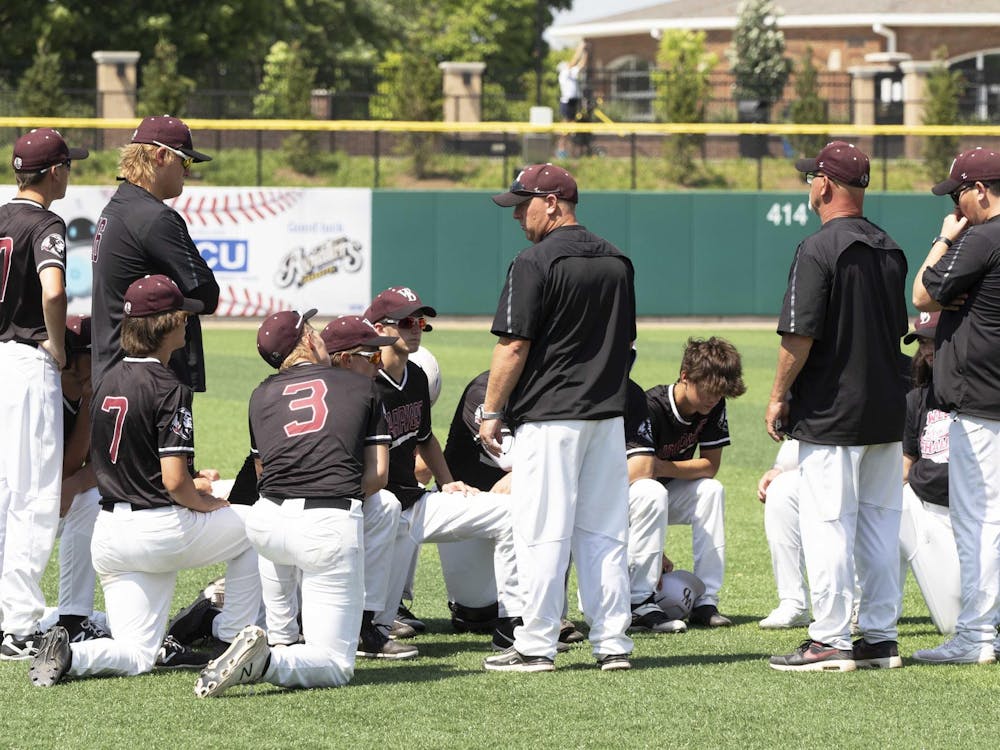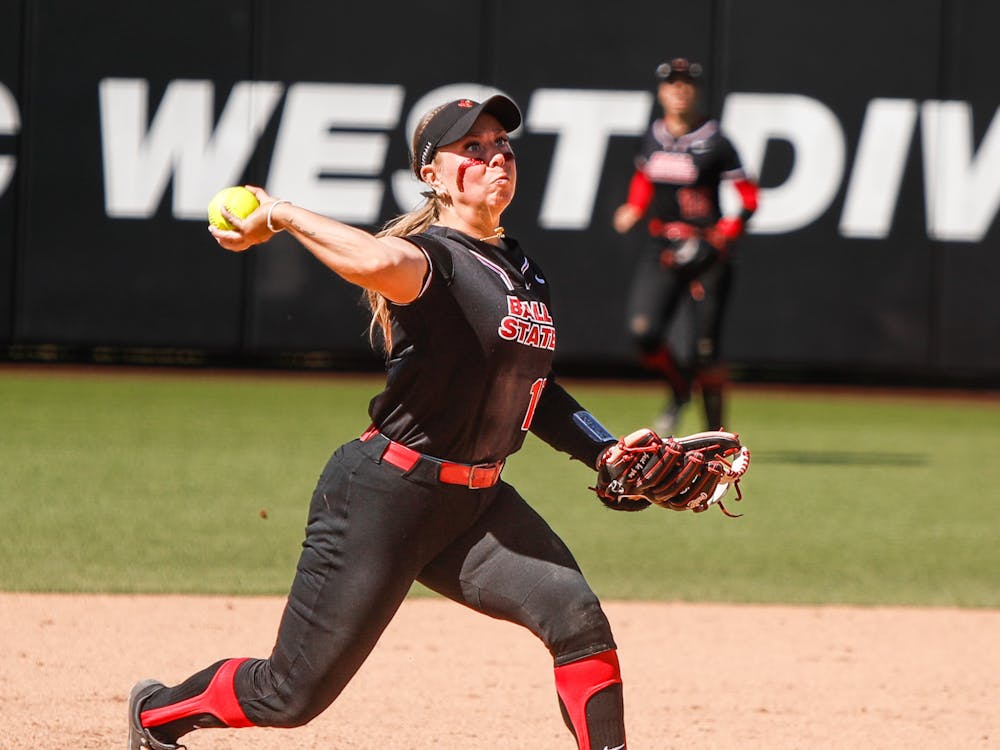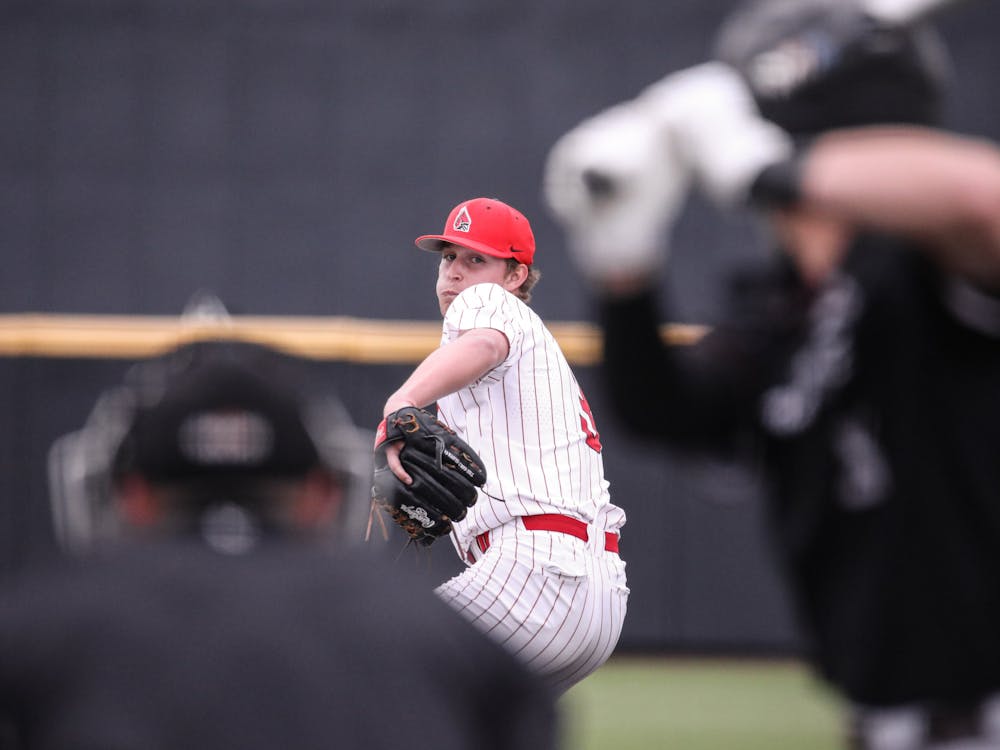In the press conference following Jamill Smith's best day as a college football player — the one that saw him catch the game-winning touchdown and break one long kickoff return after another — he was asked to explain what had sparked his big game. Maybe he had eaten a special breakfast Saturday morning, a reporter suggested.
Smith laughed, which he does easily and often. Before he got a chance to answer, his coach cut in.
"He doesn't eat enough," Pete Lembo said.
Smith laughed again.
"That's a good answer," he said.
***
Jamill Smith is 5 feet 8 inches and weighs 138 pounds, according to Ball State's official roster. That makes him the lightest player to appear in a Football Bowl Subdivision game this season, which Smith has done eight times as Ball State's backup slot receiver and kick returner.
A month ago, Smith's weight was listed as 137 pounds. That made him the lightest player in FBS (Arkansas lists backup kicker John Henson at 5 feet 11 inches, 138 pounds). But it hardly matters whether Smith weighs 137, 138 or even less. He is, on average, 49 pounds lighter than Ball State's 14 other wide receivers. He is clearly too small to play Division I football.
And, yet, he isn't.
Through Ball State's first eight games, Smith, a redshirt sophomore, has 21 catches for 195 yards. In Saturday's victory against Central Michigan, Smith caught what proved to be the game-winning touchdown, his second of the year. He has served as the Cardinals punt returner in every game this season.
Three years ago, no FBS school offered Smith a scholarship. Too small, they said. Only Ball State, just on the other side of Muncie from Smith's home, even offered preferred walk-on status. And that came with the caveat of Smith moving from quarterback to wide receiver.
It wasn't ideal. Smith had put up spectacular numbers as Muncie Southside High School's quarterback. His senior year statistics were so unbelievable that when the Bloomington Herald-Times put together its Top 33 teams in 2008, it had to call an opposing coach to verify Smith's passing and rushing yards.
Division II and Division III schools were lined up to let Smith play quarterback. They didn't care how small he was. They knew he could play.
But Smith's dream was to play Division I football, so he accepted Ball State's offer of a walk-on spot and set about proving to everyone that he wasn't too small, that he belonged at the highest level of college football.
***
On the final day of the 2005 regular season, when Smith was a freshman in high school, Southside travelled to Lafayette Jefferson High School, one of the biggest schools in Indiana. Before the game, Southside coach Mike Paul was talking with the opposing coaches when Smith walked by. Paul remembers Smith weighing about 100 pounds at the time.
"That kid, he's playing," Paul told the other coaches. "He's starting tonight as a defensive back."
"There's no way," they said.
"Yeah, he is," Paul responded.
Southside lost for the eighth straight time, but Smith was undeterred. His role on the team would grow in coming years as he became quarterback, defensive back, kick returner and even place kicker. In 2007, he led Southside to its first winning season in seven years and was named football athlete of the year by The Muncie Star Press. The next year, he took Southside back to the sectional championship and was in the mix to be Mr. Indiana Football.
Paul's only regret about Smith's high school years is that he didn't start him at quarterback as a freshman.
"But he was so teeny," Paul said.
Teeny or not, Smith excelled in high school. Southside played a spread offense, which Paul says was "made for Jamill Smith in high school." His statistics were mind-blowing. He accounted for 86 touchdowns and more than 8,000 yards of total offense in his junior and senior years combined.
But in the eyes of Division I coaches, those numbers paled in comparison to his height and weight.
"If he was bigger, he'd have gone to any school in the nation," Paul says. "If he was bigger, he'd be an NFL player."
***
At one time, Eddie Faulkner was as much of a sensation in Muncie as Smith was in high school. Faulkner was a star running back at Muncie Central High School before playing at Wisconsin. When Faulkner's playing days ended, he returned home to become an assistant coach at Ball State.
It was Faulkner who would ultimately tell Smith that Ball State had a place for him as a preferred walk-on. His sales pitch was simple: an opportunity to walk on at Ball State, a Division I school. Because no one else was even offering Smith that much, the decision was simple as well.
Smith came to Ball State in August 2009 and began the transition from quarterback to wide receiver. He knew he would redshirt his first year, and made the most of it. He did his best to bulk up and worked on his routes. He traveled with the Cardinals and learned what it really meant to be a Division I football player.
"I definitely needed that redshirt year," Smith said. "Just learning, traveling, just getting experience."
At the end of the season, Smith was named Ball State's Offensive Scout Team Player of the Year. But his real reward was when coach Stan Parrish awarded him a scholarship for the next year.
Smith had done it. He was now a Division I football player, going to school on a full-ride. Now it was time to prove to everyone he belonged on the field.
***
Tori Gibson remembers when he met Smith. Gibson, also a wide receiver, was starting his sophomore year in 2009 when he saw the scrawny freshman step on a scale.
"He weighed in at 123," Gibson said. "The first thing that came to my mind was, ‘He gets hit, like, he's done. He's not going to last long.'"
But Smith has a way of eluding the biggest hits. Paul, Smith's high school coach, said he wasn't the fastest player at Southside, but he was the quickest. Smith said he has gotten faster, but credits his quickness for helping avoid crushing blows.
As a freshman, Smith almost exclusively returned punts. He caught just one pass, which lost five yards. He practiced some other roles, including a tryout in the Wildcat formation, though it didn't work out.
But he was just a freshman, in his first year as a wide receiver. His opportunities would surely come later.
Then, Parrish was fired. Faulkner moved on to Northern Illinois. Smith would have to prove himself all over again, make a whole new coaching staff see him as more than just 5 feet 8 inches, 137 pounds.
***
Smith was the first player offensive coordinator Rich Skrosky met after joining Lembo at Ball State last December. Lembo and his first staff members were hired during winter break, so most of the players were away from Muncie, but Smith came across town to meet his new coaches.
"If a kid has ability, we're going to find a role for him," Skrosky told Smith.
True to his word, Skrosky has found a way to use Smith. He has continued as the Cardinals punt returner and is the backup to senior slot receiver Briggs Orsbon. Recently, Smith has taken on kickoff return duties as well.
While Smith's play has often been more workmanlike than highlight-reel, he has already become an attraction, especially with local fans.
Even before he graduated from Southside, Smith was becoming a role model in Muncie. The Indiana High School Athletic Association chose him for an anti-smoking campaign during his senior year that featured him on a billboard on Madison Street.
Now when Paul comes to Ball State games, he often hears young fans at Scheumann Stadium wondering which player is Smith, the hometown hero. It is a role he is happy to embrace.
"I remember when I was in high school, I used to come watch games and I looked up to [Ball State players] as role models," Smith said. "They need positive role models; there aren't a lot of positive role models in Muncie. Having that role is great. I love it."
Paul thinks Smith can have an impact beyond Muncie. With Ball State appearing on national TV throughout the year, undersized football players across the country can see Smith achieving his dream and draw on his success as motivation.
That would be just fine with Smith, too. He boasts in his Twitter bio of being the smallest player in Division I football. On the field, however, it is a different story.
"The neat thing about Jamill," Skrosky said, "is every time we take the field, he thinks he's the best player on it. And it doesn't matter if it's in Norman, [Okla.,] or in Muncie or South Florida. He believes he's the best player on the field."




